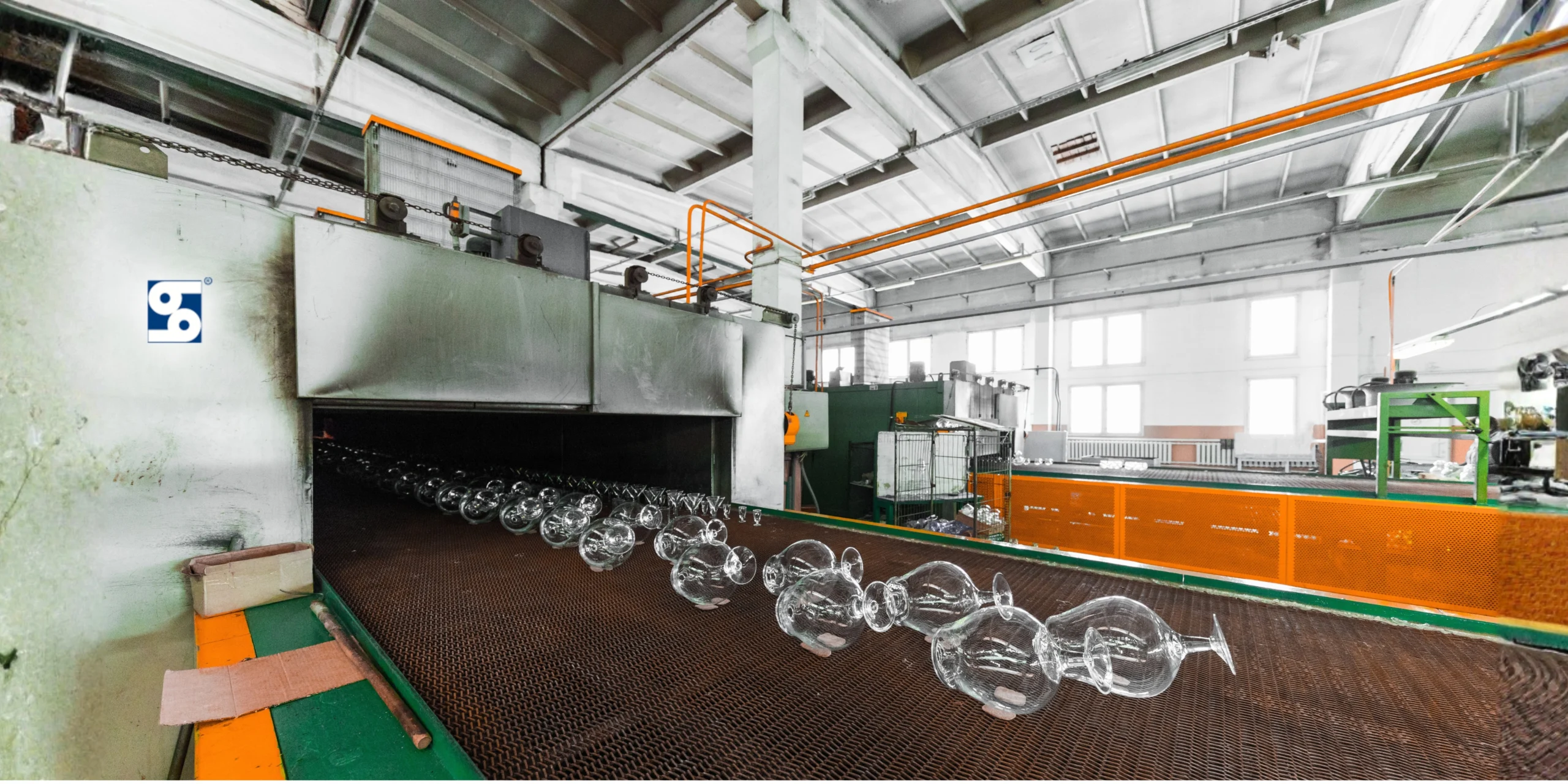
Energy efficiency is becoming a primary goal for modern glass manufacturers.
From melting furnaces to annealing lines, every stage of glass manufacturing requires a constant supply of air for combustion, cooling, and ventilation.
However, maintaining good performance while reducing energy usage might be difficult in such warm environments.
Industrial blowers and fans play an important role here.
These technologies, designed to optimise airflow and temperature control, help improve operating efficiency, reduce fuel and power use, and increase the overall sustainability of glass manufacturing plants.
1. The Role of Air Movement in Glass Manufacturing
Glass manufacturing is an energy-intensive process that requires high temperatures and careful airflow control.
The primary stages, melting, refining, forming, and annealing, all require accurate air pressure and flow.
Industrial centrifugal blowers and axial flow fans are responsible for:
- Deliver combustion air to furnaces
- Maintain temperature uniformity
- Cool molten and produced glass
- Remove fumes, dust, and excess heat.
Plants without appropriate air circulation may have lower melting efficiency, poor product quality, and higher electricity bills.
Blowers and fans help to improve energy efficiency and process reliability by improving air management.
2. Improve Combustion Efficiency with High-Performance Blowers
The glass melting furnace is the heart of any glass production plant, consuming the majority of the facility’s total energy.
Efficient combustion is crucial to ensuring fuel savings and constant operation.
Centrifugal blowers designed for combustion air supply ensure that the burners receive the appropriate amount and pressure of air.
When combustion air is appropriately combined with fuel, burning becomes more complete. This results in:
- Reduced unburned fuel loss
- Lower energy consumption
- Fewer emissions and pollutants
Energy-efficient blowers with backward-curved impellers and variable frequency drives (VFDs) can fine-tune airflow to fulfil heating demand, reducing energy waste during low-load operations.
3. Cooling and stress-relieving Controlled Air to Save Energy
After forming, glass products must be carefully cooled to remove internal stresses, a process known as annealing. This stage is significantly dependent on the efficiency of axial flow fans and cooling blowers.
Modern fans provide constant airflow across glass sheets or containers, resulting in smooth temperature transitions without cracking or deformation.
Using high-efficiency fan designs, manufacturers can achieve:
- Up to 20% lower energy usage
- Precise cooling control
- Extended equipment life due to reduced overheating
In addition, VFD-enabled systems enable operators to adjust fan speed in real time, ensuring that only the correct amount of energy is utilised at each stage of production.
4. Air Pollution Control and Plant Ventilation
Glass melting and finishing release dust, fumes, and gases that may affect worker safety and equipment performance.
Installing industrial exhaust fans and air pollution control systems helps to remove these pollutants, resulting in clean air and stable temperatures inside the manufacturing facility.
Cleaner air improves heat exchange efficiency and reduces the maintenance demand on cooling systems, resulting in indirect energy savings.
Furthermore, by maintaining an appropriate working environment, the manufacturing can run constantly without losing performance due to overheating or fouling equipment.
5. Customised Blower Design for Maximum Efficiency
Leading industrial blower manufacturers in India, such as Blowerfab, design air systems that provide high performance while using less energy.
Some advanced features include:
- Aerodynamically optimised impellers for higher static efficiency
- Precision balancing for vibration-free operation
- Heavy-duty construction for high-temperature endurance
- Custom-built housings to suit specific glass manufacturing needs
These design improvements allow blowers and fans to run efficiently even under demanding conditions, helping manufacturers cut down on power costs and extend equipment lifespan.
6. Long-term Benefits for the Glass Industry
Adopting energy-efficient blowers and fans has multiple advantages beyond cost savings:
- Reduced energy consumption leads to lower CO₂ emissions.
- Uniform airflow improves temperature control and glass clarity.
- Proper ventilation prevents overheating and mechanical wear.
- Efficient air handling promotes cleaner and greener operations.
With an increasing global emphasis on sustainability, investing in high-efficiency air systems has become an important step towards environmentally responsible manufacturing.
7. Why Choose Blowerfab for Energy-Efficient Solutions
Blowerfab is a reputable industrial blower and fan manufacturer in India, specialising in custom-engineered air solutions for the glass industry and other heavy-duty sectors.
Their centrifugal blowers, axial flow fans, and air pollution control systems are designed to provide maximum performance, durability, and energy efficiency in high-temperature environments.
Blowerfab’s advanced designs help manufacturers to achieve efficiency, reliability, and sustainability in one solution, whether they require a combustion air blower, a cooling fan system, or a custom-built ventilation unit.
Intelligent airflow management is crucial for energy efficiency in the glass manufacturing process.
Industrial blowers and fans are the backbone of any effective glass production facility, enhancing combustion and cooling while also providing clean air and stable temperatures.
By using Blowerfab’s high-performance air movement systems, manufacturers can reduce operational costs, improve product quality, and contribute to a greener future for the glass industry.